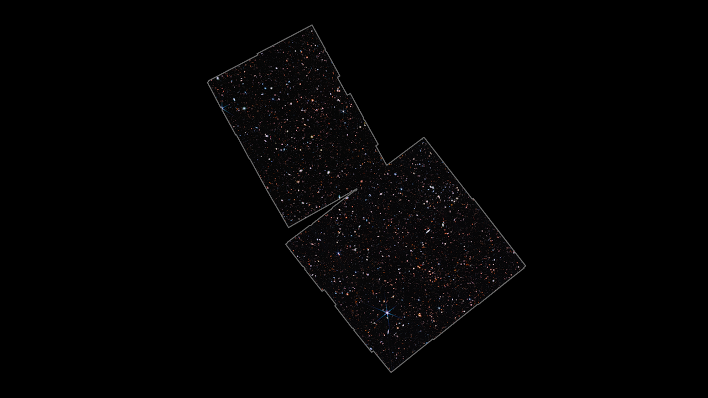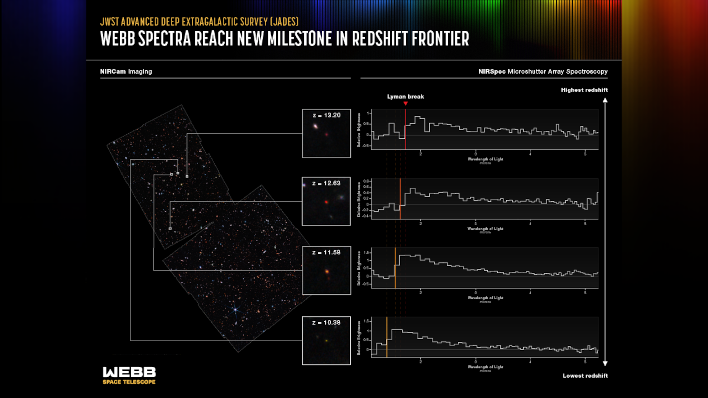NASA’s Webb Telescope Captures Amazing Details Of The Earliest Known Galaxies
The Webb telescope has been busy since its launch earlier this year, from revealing the Pillars of Creation in a new light to revealing details never-before-seen of the early universe. The highly-powerful telescope has reached further into the distant past than ever before, as it has detected galaxies that go all the way back to when the universe was only 2% of its current age. Now, the earliest galaxies that have ever been detected have been confirmed by obtaining spectroscopic observations, unveiling "characteristics and distinctive patterns in the fingerprints of light coming from these incredibly faint galaxies."

This image taken by Webb highlights the region of study by the Webb Advanced Deep Extragalactic Survey (JADES)
The Webb Advanced Deep Extragalactic Survey (JADES) placed its focus on an area in and around Hubble's Ultra Deep Field. By using Webb's NIRCam instrument, scientists were able to observe the field in nine different infrared wavelength ranges. The team then searched for faint galaxies that are visible in the infrared but whose spectra suddenly cut off at a critical wavelength known as the Lyman break. Scientists were then able to use NIRCam to yield a precise measurement of each galaxy's redshift.

Four of the galaxies studied are particularly special, as they were revealed to be at an unprecedentedly early epoch.
Co-author of the recent study Sandro Tacchella from the University of Cambridge in the United Kingdom added that is it difficult to understand galaxies without first understanding the "initial periods of their development." Tacchella continued, "Much as with humans, so much of what happens later depends on the impact of these early generations of stars. So many questions about galaxies have been waiting for the transformative opportunity of Webb, and we're thrilled to be able to play a part in revealing this story."


